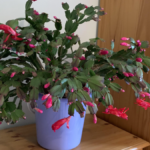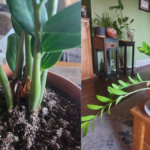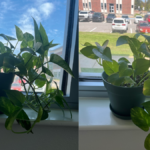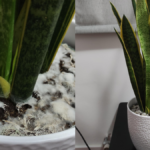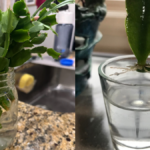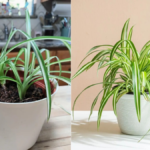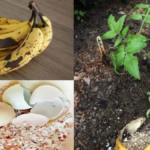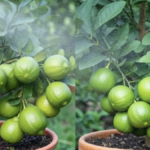Learn how to take care of a lavender plant with this easy indoor & outdoor guide. Discover the best soil, watering tips, and how to grow lavender fast.
Lavender is one of the most fragrant and beautiful herbs, loved for its soothing scent and vibrant purple blooms. Whether grown indoors or outdoors, lavender requires proper care to thrive and grow quickly.
With years of experience in gardening and plant care, I’ve learned that small details—like soil type, watering schedule, and pruning techniques—can significantly impact lavender’s health and fragrance. In this guide, I’ll share everything you need to know to take care of a lavender plant, including common problems and solutions.
Table of Contents
How to Take Care of a Lavender Plant: Essential Tips for Healthy Growth
Lavender thrives with well-draining soil, moderate watering, and plenty of sunlight. Water when the soil is dry, ensuring it never becomes soggy. Use sandy or loamy soil with a pH of 6.5–7.5. Outdoor lavender prefers full sun (6–8 hours daily), while indoor plants need bright, direct light. Prune after blooming to encourage new growth and enhance flowering. Fertilize sparingly in spring with a low-nitrogen fertilizer to promote strong stems and abundant blooms. With proper care, your lavender will flourish beautifully!
Best Soil for Lavender plant
Choosing the right soil is crucial for healthy lavender growth.
- Well-draining soil prevents root rot.
- Sandy or loamy soil supports strong root development.
- Slightly alkaline pH (6.5 to 7.5) enhances growth and fragrance.
For outdoor lavender: Mix garden soil with sand and gravel for better drainage. For indoor lavender: Use a cactus or succulent potting mix with perlite to prevent overwatering.
How to Water Lavender Properly
Lavender is drought-tolerant and thrives with minimal watering.
For outdoor lavender:
- Water deeply once every 1–2 weeks, depending on climate.
- Reduce watering in cooler months to prevent root rot.
- Ensure soil dries out between watering sessions.
For indoor lavender:
- Water only when the top 2 inches of soil feel dry.
- Avoid overwatering, as excess moisture leads to fungal issues.
- Use a well-draining pot with drainage holes to prevent water accumulation.
How to Grow Lavender Faster
Want bushier growth and more fragrant blooms? Follow these expert tips:
- Use Sandy Soil – Well-draining soil prevents root rot and promotes strong growth.
- Apply Mulch Sparingly – A light layer of gravel or sand helps retain moisture without waterlogging.
- Provide Full Sun – At least 6–8 hours of direct sunlight ensures healthy blooming.
- Prune After Flowering – Trimming spent blooms encourages fresh growth and more flowers.
- Avoid Excess Fertilizer – Too much nitrogen leads to weak stems with fewer blooms.
Common Problems & Solutions for Lavender
1. Why Is My Lavender Wilting?
- Overwatering or poor drainage
- Lack of sunlight
- Root rot due to excess moisture
solution:-
- Allow soil to dry out between watering.
- Move to a sunnier location for better growth.
- Use well-draining soil and pots with drainage holes.
2. Why Are My Lavender Leaves Turning Yellow?
- Overwatering or poor drainage
- Nutrient deficiency (especially potassium)
- Insufficient sunlight
solution:-
- Reduce watering and improve drainage.
- Apply potassium-rich compost or fertilizer.
- Ensure the plant receives at least 6 hours of direct sunlight.
3. How to Revive a Dying Lavender Plant?
- Trim dead or woody stems to promote new growth.
- Replant in sandy, well-draining soil if roots are rotting.
- Increase sunlight exposure to strengthen the plant.
- Water less frequently but deeply to prevent root rot.
How to Grow Lavender from Cuttings
Propagating lavender from cuttings is an easy and cost-effective way to grow new plants.
Steps to Grow Lavender from Cuttings:
- Select a healthy, non-flowering stem (about 4–6 inches long).
- Remove lower leaves and dip the cut end in rooting hormone.
- Plant in sandy potting soil and lightly water.
- Cover with a plastic bag to maintain humidity.
- Keep in bright, indirect sunlight and mist occasionally.
- After 3–4 weeks, the cutting will develop roots and can be transplanted.
Best Fertilizer for Lavender
Lavender doesn’t require heavy feeding, but the right fertilizer helps maintain healthy growth.
- For overall health – Use a balanced low-nitrogen fertilizer (5-10-10).
- For stronger roots – Apply bone meal or fish emulsion once in spring.
- For organic feeding – Use compost tea, wood ash, or diluted seaweed extract.
Apply fertilizer sparingly in early spring and summer but avoid overfeeding, as too much nitrogen leads to weak, leggy growth.
FAQs on Lavender Plant Care
How often should I water my lavender?
Water once every 1–2 weeks outdoors and when the top 2 inches of soil feel dry indoors.
Why does my lavender have woody stems?
Lavender becomes woody with age. Prune regularly to encourage fresh, soft growth.
When should I prune lavender?
Trim after flowering in late summer and give a light prune in early spring.
Can I grow lavender in pots?
Yes, Use a well-draining pot with sandy soil and place it in full sun.
What’s the best way to dry lavender?
Harvest flowers before they fully open, tie in small bundles, and hang upside down in a dry, dark place.
Final Thoughts
Lavender is a rewarding and low-maintenance plant when given the right care. From choosing the best soil to proper watering and pruning, these simple steps will help your lavender thrive indoors or outdoors. With patience and the right techniques, you’ll enjoy fragrant, beautiful lavender blooms year after year.
Read more Post:-
How to Take Care of a Jade Plant in Summer : The Ultimate Guide
How to Take Care of a Bat Plant (Tacca chantrieri) – Expert Guide 2025
Peace Lily Care Guide: My Experience with Drooping Leaves, Brown Tips & Blooming Issues

